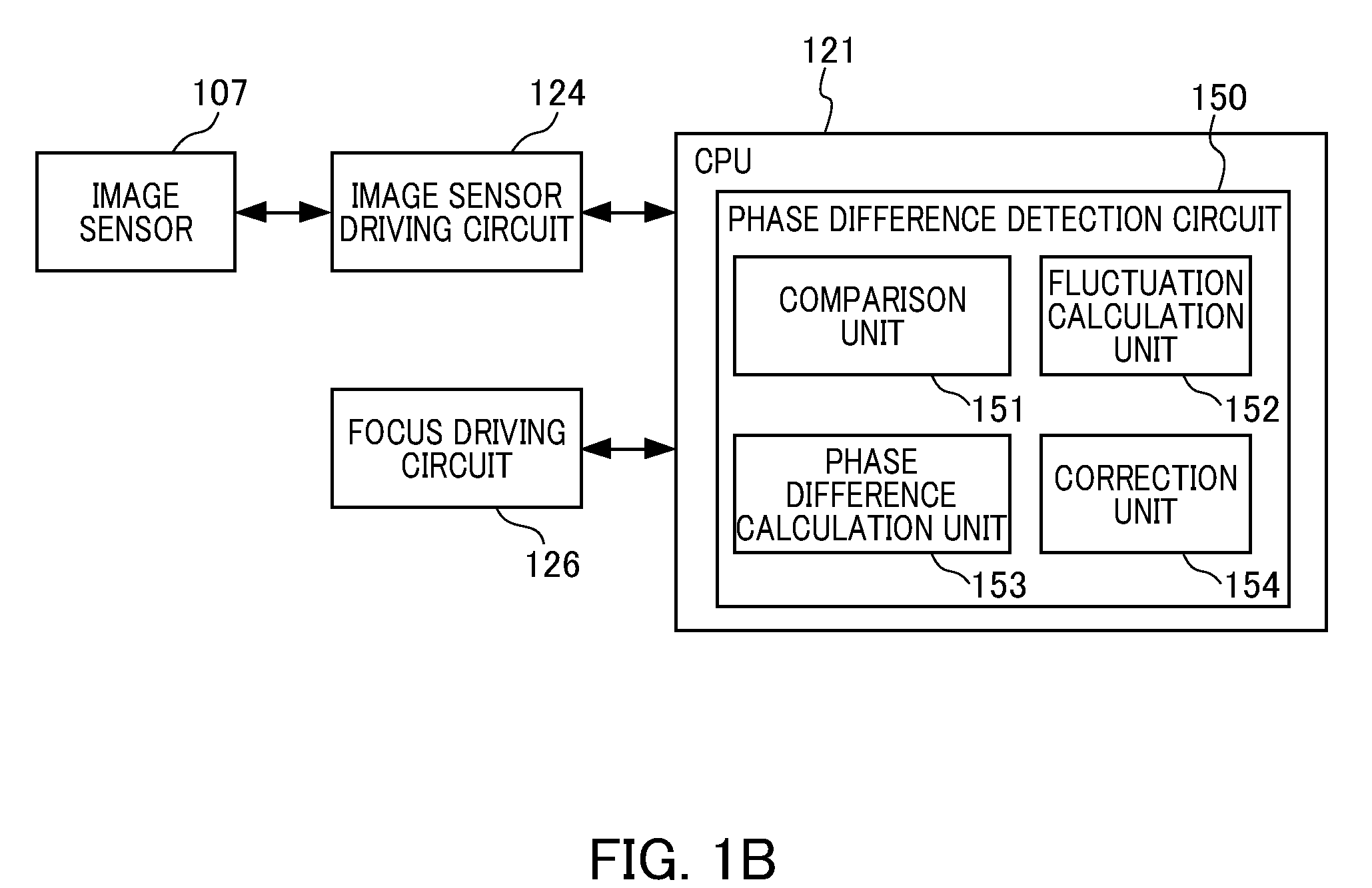Phase difference detection device, imaging apparatus, phase difference detection method
a detection device and detection method technology, applied in the direction of color signal processing circuits, exposure control, camera focusing arrangement, etc., can solve the problems of detection error, detection error, deviation of the phase difference detection result of two image signals, etc., and achieve the effect of less susceptibl
- Summary
- Abstract
- Description
- Claims
- Application Information
AI Technical Summary
Benefits of technology
Problems solved by technology
Method used
Image
Examples
first embodiment
[0060]FIG. 1A is a view of the configuration of the camera of the first embodiment provided with the phase difference detection device of an embodiment of the present invention. The camera of the first embodiment is a digital camera that serves as an imaging apparatus integrating a camera body having an image sensor with a photographic optical system TL. The camera of the first embodiment includes a first lens group 101, a stop / shutter 102, a second lens group 103, a third lens group 105, a low-pass filter 106, an image sensor 107. In addition, the camera of the first embodiment includes a zoom actuator 111, a stop / shutter actuator 112, a focus actuator 114, an electronic flash 115, an AF auxiliary light unit 116, a CPU 121, an electronic flash control circuit 122. The camera of the first embodiment further includes an auxiliary light driving circuit 123, an image sensor driving circuit 124, an image processing circuit 125, a focus driving circuit 126, a zoom driving circuit 129, a ...
second embodiment
[0109]With reference to FIGS. 27 to 33, the second embodiment of the present invention will be described. In the first embodiment, the image sensor includes the image sensing pixels and the focus detection pixels, and the pupil is split by projecting an aperture biased toward the center of the microlens ML in the focus detection pixel onto the exit pupil of the photographic optical system 201. Then, by calculating a phase difference between a pair of obtained image signals from a pair of focus detection pixels having an aperture biased in the opposite direction, the focus state of the photographic optical system 201 is detected. In other words, the first embodiment is a phase difference focus detection method of the TTL (through the lens) primary image-forming type. In the second embodiment, a light beam guided by the optical path splitting between the photographic optical system 201 and the image sensor is reimaged by a secondary image forming optical system composed of a pair of l...
third embodiment
[0129]In the second embodiment, a light beam guided by the optical path splitting between the photographic optical system 201 and the image sensor 204 is reimaged by a secondary image forming optical system (reimaging lens 214) composed of a pair of lens elements. Then, the focus state of the photographic optical system 201 on the basis of the phase difference between a pair of obtained image signals was described. In other words, the second embodiment is a phase difference focus detection method of the TTL secondary image-forming type. In the third embodiment, in addition to the photographic optical system, there is separately provided a focus detection optical system, whereby focus detection is performed by the triangulation principle. In other words, the phase difference focus detection method of the external measuring type is a feature of the third embodiment.
[0130]FIG. 34 is a view showing a configuration of a camera of the third embodiment. The camera of the third embodiment i...
PUM
 Login to View More
Login to View More Abstract
Description
Claims
Application Information
 Login to View More
Login to View More - R&D
- Intellectual Property
- Life Sciences
- Materials
- Tech Scout
- Unparalleled Data Quality
- Higher Quality Content
- 60% Fewer Hallucinations
Browse by: Latest US Patents, China's latest patents, Technical Efficacy Thesaurus, Application Domain, Technology Topic, Popular Technical Reports.
© 2025 PatSnap. All rights reserved.Legal|Privacy policy|Modern Slavery Act Transparency Statement|Sitemap|About US| Contact US: help@patsnap.com



